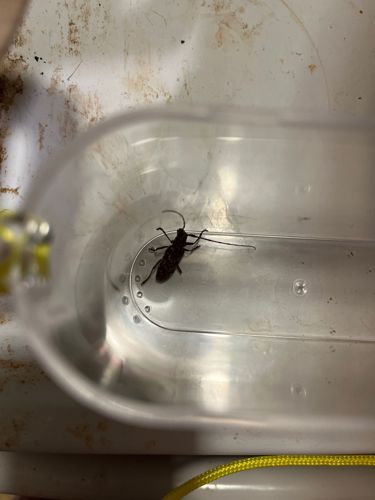Longhorn Beetle
Scientific Name: Cerambycidae (Family)
Order & Family: Order: Coleoptera, Family: Cerambycidae
Size: Highly variable depending on the species, ranging from 3 mm to over 150 mm (0.1 to 6 inches) in length. The specimen in the image appears to be in the moderate to large size range for a longhorn beetle, likely several centimeters.

Natural Habitat
Typically found in forested areas, woodlands, and areas with abundant trees, as their larvae develop in wood. They can also be found in and around homes if wood structures are present or firewood is stored nearby.
Diet & Feeding
Larvae of most species are xylophagous, meaning they feed on wood (living, dead, or decaying trees, or even processed lumber). Adult diets vary; some feed on pollen, nectar, tree sap, or leaves, while others do not feed as adults.
Behavior Patterns
Adults are active flyers, especially at dusk and during the night, and are often attracted to lights. Larvae bore into wood, creating tunnels and often making a characteristic chewing sound. The life cycle can be quite long, sometimes several years, depending on the wood they are feeding on. Females lay eggs in crevices on bark.
Risks & Benefits
Risks: Some species are considered pests, particularly to the timber industry and forestry, as their larvae can cause significant damage to living trees, logs, and wood products like furniture and structural timber. They can also be a nuisance if they emerge indoors from firewood. Benefits: Many species play a crucial role in forest ecosystems as decomposers, breaking down dead and decaying wood, which helps in nutrient cycling. Some species are also important pollinators.
Identified on: 8/18/2025